Electric buses are propelled by motors and run on electricity. Unlike traditional diesel-powered buses that are fitted with internal combustion engines, electric buses are zero-emission and produce less noise.
Given their environmental benefits, many cities have added electric buses to their public bus fleet. In Singapore, following a small-scale electric bus trial involving 60 buses, the government and the Land Transport Authority (LTA) have committed to having half of its public bus fleet be electric by 2030, which is about 3,000 buses, and a 100% cleaner energy public bus fleet by 2040. This rapid adoption would also entail the fitting out of electric bus charging infrastructure around Singapore in the years to come.
In recent years, LTA has ramped up procurement of electric buses across several tender rounds, which are also elaborated in this article:
- 2018: 60 Electric Buses Procured by LTA
- 2023: 360 new 3-door electric buses procured by LTA (Option of 60 additional buses exercised; Total 420 buses)
Advantages of Electric Buses
Electric buses offer clear operational advantages for a highly urbanized environment like Singapore. With zero tailpipe emissions, the bus does not contribute to urban air pollution within the immediate vicinity, while also reducing noise pollution. In the mechanical aspect, electric buses have far fewer moving parts as compared to buses with internal combustion engines, thus requiring less maintenance. Operating costs are further lowered without the need for diesel fuel.
Types of Electric Buses
There are several main types of electric buses, differing in their method of energy storage and operating principles. The most prevalent type is the battery-electric bus, which stores energy onboard in a chemical battery, with Lithium-ion chemistries being the most popular. In Singapore, all electric buses have been battery-electric.
A variant of this technology is used on the supercapacitor or ultracapacitor bus, where capacitors are used instead of batteries to store their energy. While capacitors store far less energy (~5%) for the same weight as compared to conventional batteries, they can charge and discharge very quickly, making them more suited for bus routes that stop frequently and predictably. A supercapacitor bus was briefly trialled at NTU, but has since been discontinued. For conventional bus operations, battery-electric buses are most suited for public bus routes.
Some electric vehicles need a constant source of electricity (such as trolleybuses), but such vehicles are confined to a network of overhead lines and thus lack deployment flexibility. Apart from the infrastructure cost of building and maintaining overhead lines, they are also regarded as unaesthetic.
Finally, the plug-in hybrid bus combines the plug-in charging capabilities of electric buses with a conventional hybrid bus drivetrain (thus, essentially hybrid buses with larger-capacity batteries and external battery charging capabilities, designed for prolonged electric-only running). Only a small handful of such bus models exist, with examples being the Volvo 7900 Electric Hybrid and the ADL Enviro400VE.
Battery Electric Bus – Charging Modes
Among battery-electric buses, two distinct design philosophies have been adopted. The conventional, Depot Charging approach (still favoured by Chinese bus manufacturers) is to place a large number of batteries on every bus to achieve sufficient operating range over a day’s worth of revenue service, hence making their day-to-day operations similar to that of traditional diesel buses. However, equipping buses with large traction batteries makes them more expensive and heavy (and to some extent, decreases cabin space), which increases the strain on the battery, raising both energy consumption and life-cycle costs.
On the other hand, the Opportunity Charging approach is favoured by European bus manufacturers. Charging points are erected at the end-points of a bus route, which sufficiently recharges the bus in a short amount of time (usually several minutes) before the bus continues on its next trip. With fewer batteries required per bus, its advantages translate to a more spacious bus interior, lower environmental cost of battery production, and lower electricity consumption through reduced vehicle weight. Disadvantages include the reduction of deployment flexibility (cannot serve on non-infrastructure-equipped routes) and the possible impact on bus operations should a charging station break down, and some redundancy is thus required, such as installing multiple chargers at terminating points.
Around the world, the majority of Opportunity Charging systems have largely used pantograph-down charging (with a pantograph extending down from a fixed overhead mounting position). A minority of systems use pantograph-up (with a bus-mounted pantograph), plug-in charging, and ground-based inductive charging. Currently, efforts are focused on expanding the use of opportunity charging on suitable routes and the adoption of a common charging interface across different bus manufacturers (e.g OppCharge), allowing multiple bus models to use the same charger.
Challenges facing Electric Buses in SG
Singapore is a demanding environment for electric buses. To avoid compromising the efficiency of the current public bus network, electric buses must operate at levels of high availability throughout the day (at similar levels as their diesel-powered counterparts), which often requires buses to operate for over 20 hours per day.
Two major issues facing electric buses are range and charging. Not only must electric buses have an adequate range for performing several trips of a bus service, they must also be supported by charging infrastructure installed in depots and/or bus interchanges, usually in the form of cable charging or overhead charging.
Range
Regardless of the charging mode, electric buses must have enough battery capacity to deliver sufficient operating range before the bus needs to be recharged. On the operational side, bus operators must ensure that buses are sufficiently charged whilst on revenue service, which also involves factoring in unforeseen traffic conditions that may cause the bus to be stranded away from a charging point for a prolonged period of time.
Singapore’s warm and humid climate poses challenges to the performance and longevity of electric systems. In addition, air-conditioning systems consume large amounts of energy (particularly in Singapore’s climate), which puts additional strain on a battery and hence the bus’ overall range.
Charging
Electric buses must be supported by charging infrastructure installed in depots and/or bus interchanges, usually in the form of cable charging or overhead charging. Overhead charging via pantograph is a common charging method for electric buses using the opportunity charging principle, which quickly charges a bus at the end termini of a bus route (in as little as a few minutes).
Less common forms of charging which have been trialled overseas include wireless inductive charging (installed underneath the road surface, and requires no physical contact with the bus), and battery swapping buses (paired with battery swapping stations). These solutions are more complex (and more expensive) than commonly adopted charging methods and also suffer from a lack of availability should the charging station break down.
The power drawn from these charging stations (especially when implemented on a large scale) is significant, and power infrastructure must be able to cope with their power consumption. The lack of excess capacity in the existing electrical distribution network is a major hurdle to widescale electric bus adoption in Singapore, particularly due to the centralised location of bus facilities (i.e. bus interchanges and depots) which would necessitate the installation of many charging points, and in turn, draw a large amount of power from the grid. While new transport facilities can be built with this excess capacity in mind, the retrofitting of existing transport facilities proves to be more difficult.
Choice of battery chemistry
When selecting a lithium-ion battery for electric buses, there are several factors that need to be considered, such as energy density, safety, cost, and cycle life. There are several types of lithium-ion batteries that are currently used in electric buses, each with its own advantages and disadvantages.
The most common types of lithium-ion batteries used in electric buses are:
- Lithium Iron Phosphate (LFP): LFP batteries are known for their high safety, long cycle life, and relatively lower cost. LFP batteries are commonly used in electric buses because of their excellent thermal stability, making them less likely to overheat or catch fire, while still offering fast charging speeds and good energy density.
- Lithium Nickel Manganese Cobalt Oxide (NMC): NMC batteries have a high energy density and are thus lighter than LFP batteries of equivalent capacity. These batteries are commonly found in electric buses that require high energy density and fast charging.
- Lithium Titanate Oxide (LTO): LTO batteries are known for their fast charging capabilities, high cycle life, and excellent thermal stability. However, they have a lower energy density than other types of lithium-ion batteries and are more expensive.
In general, the choice of lithium-ion battery for electric buses will depend on the specific needs of the bus operator, such as the range required, the weight limit, the charging infrastructure available, and the budget.
For Singapore, the majority of electric buses use Lithium Iron Phosphate (LFP) batteries. In addition to the key advantages cited above, this preference for LFP is also due to the prevalence of electric bus models from China, the world’s largest electric bus market, where local adoption of LFP batteries is widespread.
Bus models in Singapore that do not use LFP batteries are:
- Lithium Nickel Cobalt Aluminium oxides (NCA): Volvo BZL
- Lithium Nickel Manganese Cobalt Oxide (NMC): LexSWITCH E12 SD, Scania electric bus (likely)
Singapore’s commitment to Electric buses

In March 2019, transport authorities announced a commitment to a 100% clean energy bus fleet by 2040. These goals were first announced as part of the Committee of Supply Debate 2019 and later included in the Land Transport Master Plan 2040. At the time, new diesel buses in Singapore only had to meet a minimum Euro VI emission standard for diesel vehicles, which had been in effect since January 2018.
A follow-up announcement came in March 2020 when the government announced that it would only buy electric or hybrid buses moving forward, in line with the 100% clean energy goals announced the previous year. As a result, LTA’s 100 3-door double-deck buses were the last pure diesel public buses to have been procured for the Singapore market.
In March 2022, the government announced its aim to have half of its public bus fleet be electric by 2030, in a firm commitment that electric buses were preferred over hybrid buses for the large-scale replacement of diesel buses, and the confidence that the necessary infrastructure can be fitted out in time to accommodate these buses. This comprises about 3,000 public buses and will start with the replacement of 400 retiring diesel buses by 2025 followed by a much quicker ramp-up to 3,000 buses in the following 5 years.
Initial Trial – BYD K9
Main Article: BYD K9, Go-Ahead Singapore trials BYD Electric Bus
Go-Ahead Singapore trialled Singapore’s first fully-electric bus from November 2016 to May 2017. The BYD K9 bus was produced by established Chinese electric vehicle manufacturer BYD.
The trial was intended to assess the suitability of electric buses for public transport. Initiated by the Land Transport Authority, the electric bus trial operated on 3 bus routes, 15, 17 and 119.
1st LTA Procurement of 60 Electric Buses
Main Article: 60 Electric Buses Procured by LTA
In 2017, transport authorities announced their intentions to procure 50 hybrid buses and 60 electric buses as a small-scale trial to gain operational and technical insights into these green energy buses and to evaluate their feasibility for future large-scale replacement of pure-diesel buses. The Diesel Hybrid bus tender was awarded to Volvo in 2017, and Volvo B5LH buses entered service in December 2018.
As for the electric buses, Contract PT323 (Procurement of Electric Buses) was awarded in October 2018 to three tenderers:
| Buses Provided | Tenderer | Awarded sum | |
| 1 | 20 single-deck electric buses (BYD K9 / Depot slow charging) |
BYD (Singapore) Pte. Ltd. | S$17.246 million |
| 2 | 20 single-deck electric buses (Linkker LM312 / Pantograph fast charging) |
ST Engineering Land Systems (Bidded as: Singapore Technologies Kinetics Ltd) |
S$15.148 million |
| 3 | 10 single-deck and 10 double-deck electric buses (Yutong E12 and Yutong E12DD / Depot slow charging) |
Yutong-NARI Consortium (Bidded as: Zheng Zhou Yu Tong Bus Co., Ltd.) |
S$18.247 million |
A mix of charging solutions was implemented, with BYD and Yutong buses utilizing overnight charging at depots, and Linkker buses using opportunity charging (via pantograph) at bus interchanges. All 50 Single-deck and 10 Double-deck electric buses entered service between 2020 and 2021.
- Yutong E12 [10 units]
- Yutong E12DD [10 units]
- Linkker LM312 [20 units]
- BYD K9 (Gemilang) [20 units]
2nd LTA Procurement for 360 electric buses
Main Article: 360 new 3-door electric buses procured by LTA
In March 2023, transport authorities announced their intentions to procure “about 400 electric buses” to replace diesel buses reaching the end of life from December 2024. The tender, published that same month, was titled Procurement of single deck electric buses (Reference no.: PT601). This is the first bulk procurement of electric buses in Singapore.
The LTA lists a full-low-floor layout with three doors and two wheelchair bays as necessary features for buses being provided under this tender. The tender attracted a total of 18 bids.
On 25 November 2023, the Land Transport Authority (LTA) announced that 360 new electric buses would be procured, in contracts worth $166.4 million. Awarded to two manufacturers, this is the largest order of electric buses to date in Singapore.
LTA said the contracts include an option for the authority to buy up to 60 more electric buses if needed. LTA later announced in October 2024 that it had exercised this option, procuring an additional 60 BYD BC12A04 buses under Contract PT601A.
| Buses | Awarded to | Contract sum | |
| 1 | 240 single-deck electric buses + option exercised for additional 60 buses (BYD BC12A04 / Depot charging) |
BYD (Singapore) Pte. Ltd. (Contract PT601A) |
S$108.1 million (240 units; prior to option) |
| 2 | 120 single-deck electric buses (Zhongtong LCK6126EVG / Depot charging) |
Cycle & Carriage Automotive Pte. Ltd. (partnered with Zhongtong Bus) (Contract PT601B) |
S$58.3 million |
In addition, the LTA also awarded a separate tender, titled Electric Vehicles Charging System (EVCS) for Electric Buses (Reference no.: BD401), for installing charging infrastructure at various bus depots to support the procurement of these buses. Sengkang West, East Coast and Gali Batu Bus Depots were selected for charger installation.
Electric Buses supplied to LTA for Trial
Numerous electric buses have been supplied to LTA for trial. The following list includes 3-door buses designed for the Singapore market but yet to be offered to LTA for trial/commenced revenue service.
As of Nov 2025:
| eBus Model | Registration | Units Supplied | Type | Bus Operator | Years in Operation |
| Ankai G9 |
SG4009M | 1 | 3-Door SD | SMRT | 2023–2024 |
| BYD B12A03 |
SG4013A | 1 | 3-Door SD | SBST | 2023– |
| BYD K9RC |
SG4005Z | 1 | 2-Door DD | SBST | 2022–2023 |
| BYD BC12A05 (B12DS) |
TBC | 1 | 3-Door DD | — | — |
| CRRC CSR6120GLEVD2 (eD12) |
SG4015U | 1 | 3-Door DD | GAS | 2025– |
| CRRC TEG6125BEV03 |
SG4006X | 1 | 3-Door SD | GAS | 2021–2023 |
| FTBCI FBC6120BRS7 |
SG4012C | 1 | 3-Door SD | GAS | 2023– |
| King Long XMQ6127 |
— | 1 | 3-Door SD | — | — |
| MAN Lion’s City E |
— | 1 | 2-Door SD | Sold to Private Operator (Leisuire Frontier) | – |
| LexSWITCH E12 SD | — | 1 | 3-Door SD | — | – |
| Scania e-Bus | TBC | 1 | 2-Door SD | — | — |
| Volvo BZL – SC Neustar City | SG4007T | 1 | 3-Door SD | TTS | 2023–2024 |
| Zhongtong LCK6126EVG (N12) | SG4010H | 1 | 3-Door SD | GAS | 2023–2024 |
| Zhongtong LCK6126EVGS (N12D) |
SG4014Y | 1 | 3-Door DD | TTS | 2025– |
In 2021, 2 electric buses were supplied to the LTA for trial purposes: the BYD K9RC (SG4005Z) and the CRRC C12 (SG4006X). Both of these buses were supplied by Chinese manufacturers, with bodywork from Gemilang Coachworks.
More trial buses would enter service from 2023 onwards, starting with the Volvo BZL – SC Neustar City (SG4007T) in March 2023.
LTA rollout of public bus chargers
In LTA’s initial tender for 60 electric buses, the installation of electric bus chargers was bundled together with the buses, so as to evaluate them independently.
To support the future rollout of electric buses, the LTA awarded a separate tender, Contract BD401 – Electric Vehicles Charging System (EVCS) for Electric Buses, to provide installation of charging infrastructure at various bus interchanges and depots to support the procurement of these buses.
Other Electric Public Buses (non-LTA procured)
BYD C6 (Public Bus)
The BYD C6 is a midibus with a capacity of around 24 passengers and entered public bus revenue service on Bus Service 825 from 17 October 2019. In total, 4 BYD C6 buses are used for this service (3 operational 1 spare). These buses are leased from BYD (Singapore) Pte Ltd.
Formerly operated by SMRT Buses, these buses are operated by Tower Transit from October 2021 under the Sembawang-Yishun Bus Package.
MAN A22 Retrofitted Electric Bus
The MAN A22 Retrofitted Electric Bus is the product of an electric bus conversion project undertaken by ST Engineering and Linkker on an existing MAN A22 (Euro V) bus as a proof-of-concept. The bus was shipped to Finland for modification work before returning to Singapore. Only one unit of this bus has been produced, and charging is primarily via an inverted pantograph connection (Oppcharge).
Legacy electric bus: TIBS minibus
In 1997, Trains-Island Bus Service (TIBS) converted a 19-seater Nissan Civilian midibus into an electric bus, in a project undertaken in cooperation with Singapore Polytechnic and Green Fuel Resources Pte Ltd. It was touted as Singapore’s First Zero Emission Electric Bus.
An electric drivetrain was retrofitted on the bus, replacing the diesel engine. It was powered by three parallel strings of 204 V rechargeable batteries, and had a range of 300 km in a single charge.
TIBS Press Release (1997) (Click to expand)SINGAPORE’S FIRST ZERO EMISSION ELECTRIC BUS
A 19-seater Trans-Island bus has been converted by staff from TIBS Motors Pte Ltd, Singapore Polytechnic and Green Fuel Resources Pte Ltd to become Singapore’s first zero emission electric bus.
The prototype has made a special appearance at Tech Connect ‘97, held at Suntec City, from Monday, 29 September ‘97 to Wednesday, 1 October ‘97, in conjunction with Tech Month ‘97.
The diesel engine of the Trans-Island bus has been replaced with an electric drive engine system which runs on batteries instead of fuel. Two types of batteries are used, namely, booster Advanced Lead Acid and Zinc-Air batteries.
Powered by three parallel strings of 204 Volts rechargable batteries, the Trans-Island prototype is envisaged to be able to travel a distance of about 300km in a single charge. This is roughly the distance a commercial bus travels everyday in Singapore.
Although electric buses are available in Europe, United Kingdom and United States, the range covered by these buses are limited as they can travel only a range of about 60 to 80 kilometres.
The advantage of the Trans-Island electric bus is that it is environment friendly and produces low noise. The Trans-Island prototype can be recharged in a couple of hours using any ordinary power point and it runs at a top speed of 50km/h and has a power output of 70hp. The engine and air-conditioning unit can be running while it is being recharged, without any worry of carbon-monoxide poisoning.
The conversion of the 19-seater Trans-Island bus took only four weeks to complete, and TIBS Motors Pte Ltd is now conducting feasibility studies with Singapore Polytechnic’s Electrical Engineering Department to research on the possibilities of enabling Electric Vehicles to be commercially viable on Singapore roads in the near future.
Currently, about 90% of Trans-Island Buses are environment friendly with engines which have emission levels which meet the Euro 1 standard. The air-conditioning systems are also ozone friendly and the seats used are fully recyclable.
The future looks bright for electric vehicles and environment friendly vehicles, particularly now with the current haze problem in Singapore. Vehicles which use alternative propulsion which emit little or negligible emissions is the thing to come in the future.
Singapore’s First Zero Emission Electric Bus is a joint project by TIBS Motors Pte Ltd and Singapore Polytechnic, with assistance from Green Fuel Resources Pte Ltd.
Privately-operated Electric Buses
More details on each bus type are included in the linked bus model article.
- Zhongtong N12 – Electric city bus (both 2 & 3-door variants). 35 units bought by ComfortDelGro Bus. 14 units operated by Tong Tar Transport (inclusive of ex-LTA Trial Bus unit)
- BYD B12A03 – 3-door Electric city bus. 10 units bought by ComfortDelGro Bus
- Yutong E11 – Electric coach; 7 units bought by Woodlands Transport
- Yutong C11E – Electric coach; one unit bought by Leisure Frontier
- Zhongtong LCK6129EV – Electric coach; 7 units bought by ComfortDelGro Bus
- Zhongtong LCK6116EV – Electric coach, one unit bought by Tong Tar Transport (no photo appended; PD1017K)
- BYD C9 – Electric coach; two units owned by HDT Singapore
- BYD C8 – Electric coach; one unit owned by HDT Singapore
- BYD C6 – Electric midibus; multiple operators. Primarily used as shuttle buses
- CRRC Pro 7 – Electric midibus; 2 units operated by Yeap Transport
- Zhongtong LCK6750EVG – Electric midibus; multiple operators. Primarily used as shuttle buses
Special Use Electric Buses
More details on each bus type are included in the linked bus model article.
- Bolloré Bluetram – Supercapacitor bus. Under a NTU-BlueSG collaboration.
- ST Autobus – ST Engineering autonomous testbed, based on the Yinlong CAT6680CRBEVT2
- STROBO Series 7 Bus – ST Engineering autonomous testbed, based on the BYD K6
- MooVita MooBus – MooVita autonomous testbed, based on the King Long XMQ6650GEV
- Volvo 7900 Electric – Autonomous bus under NTU-LTA-Volvo-SMRT collaboration; 2 units
- ST Engineering STROBO Series 12 Bus – ST Engineering autonomous testbed based on the Linkker 12 LF. Bodied by Gemilang Coachworks.
- STE-Linkker Autonomous Electric Bus – ST Engineering autonomous testbed based on the Linkker 12+.
More Electric Buses
See Autonomous Buses in Singapore
Overseas Use
Opportunity Charging in Europe

Opportunity charging of electric buses is gaining popularity in Europe with bus manufacturers producing buses capable of supporting overhead charging. One such overhead charging platform is OppCharge, an open and competition-neutral interface supplied by Swiss-Swedish engineering group ABB. By being compatible with multiple bus manufacturers, Oppcharge offers bus operators choice and flexibility of buses without the need to modify existing charging infrastructure. These overhead pylon chargers with extendable pantographs are usually installed at the end stops of bus routes, allowing buses to quickly receive a full charge in-between trips.
Charging is fully automatic and secured by a two-way WiFi communication sequence. The driver gets a clear indication in order to stop within the specified ± 200 mm from the reference point. The charging sequence is started by activating the parking brake, and the driver can interrupt it at any time.
While OppCharge is the main vehicle-agnostic opportunity charging platform being rolled out in Europe, companies continue to offer proprietary charging solutions. For example, Alstom offers the SRS ground-based static charging system for trams or electric buses, where a current collector device deploys from the underside of the vehicle which makes contact with a charging plate installed on the road.
Electric Buses in Malaysia
Electric buses have also entered the Malaysian market. The BRT Sunway Line in Kuala Lumpur is fully operated by 15 battery-electric BYD buses (some of which were later redeployed outside the Bus Rapid Transit network). In addition, the Putrajaya region trialled 10 pantograph-charging electric buses in 2016 and has since procured 150 more units on delivery. These buses are operated by Nadi Putra. Most recently, electric buses were rolled out in the city of Kuala Terengganu on the myBAS service, a new series of residential bus routes to boost the existing bus network.
In addition, an Elektrik Bas Inovasi Malaysia (EBIM) program is researching and developing domestic electric bus technology.
Large Scale Rollout
A large-scale rollout of electric buses is prevalent in China where government grants for electric vehicles are strong. Even before the rollout of electric buses, natural gas buses were increasingly prevalent in Chinese cities.
Shenzhen is leading the way in electric bus usage with all 16,359 buses running on electricity, making Shenzhen the first in the world to have a citywide all-electric bus fleet. It also aims to convert all 17,000 taxis to electric ones by 2020, and as of early 2018, more than 63 per cent of them are electric.
See Also:
External Links & References:
- Linkker Intelligent Mobility [PDF]
- Linkker Quality of Life in Cities [PDF]
- Carrilero, Isabel & Gonzalez, M. & Anseán, David & Viera, Juan & Chacón, Joaquín & Pereirinha, P.G.. (2018). Redesigning European Public Transport: Impact of New Battery Technologies in the Design of Electric Bus Fleets. Transportation Research Procedia. 33. 195-202. 10.1016/j.trpro.2018.10.092.
Back to Buses





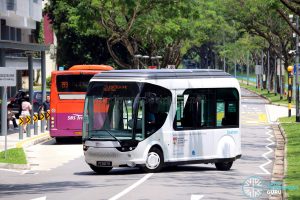




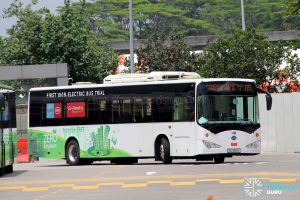


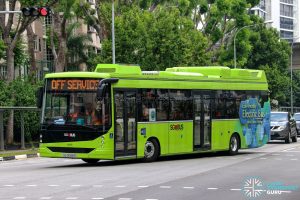




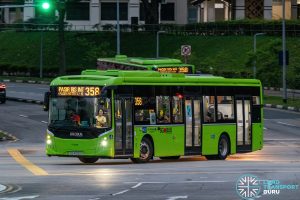










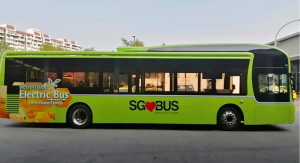

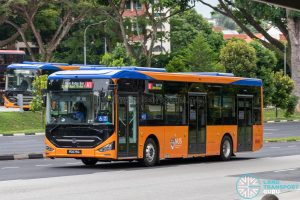
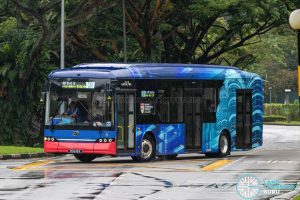










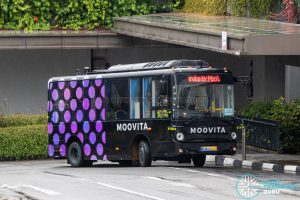
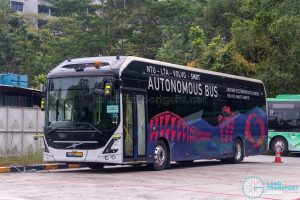


There is a ComfortDelGro Bus Zhongtong LCK6129EV registered as PD675S.
SG future electric bus models will be MAN Lion City E SD/DD,MB Citaro E SD,ADL Enviro500 E DD,Volvo 7900 SD/BZL DD e,Yutongs and BYDs.
Actually might have Enviro 200 EV